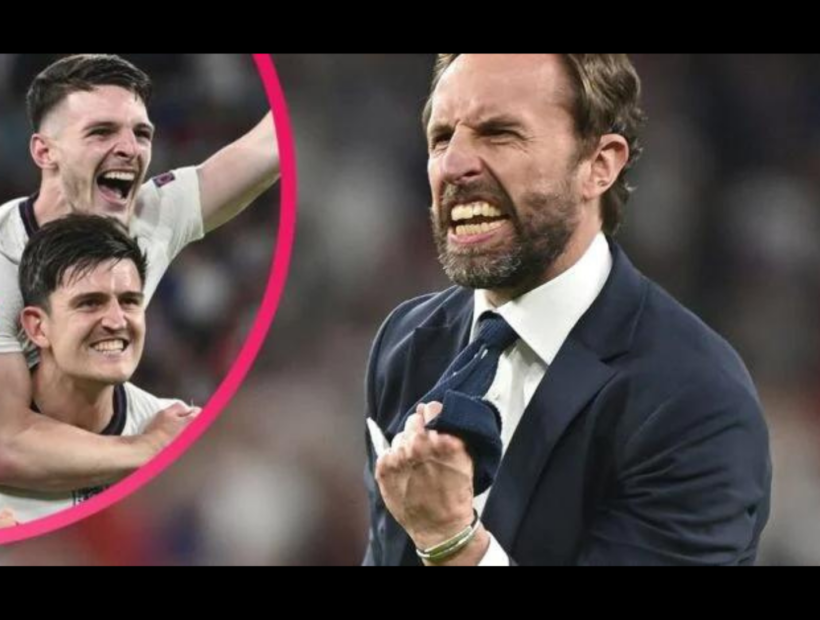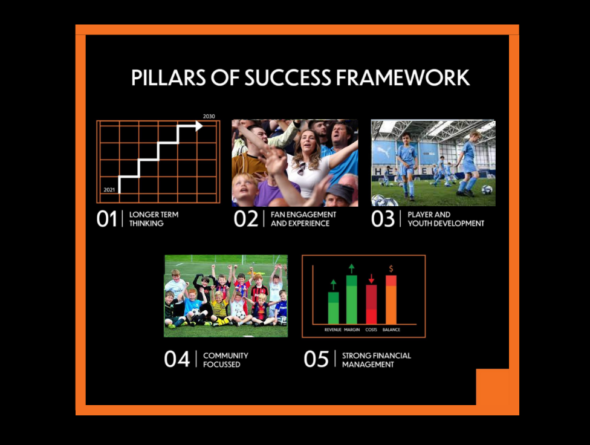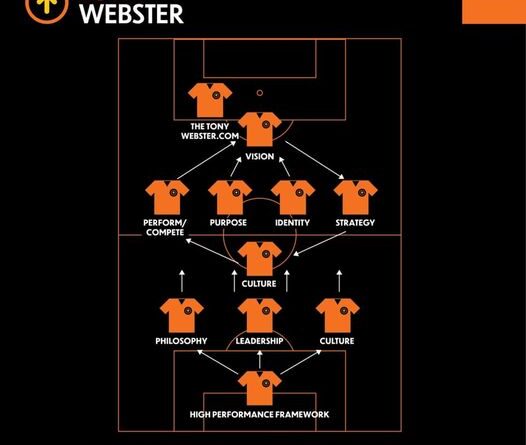How did England achieve the success they have had over recent years and how have they become so good? England have always had quality players, some world-class, but they have been perennial failures in major tournaments. So, what is the difference now, what has changed and what can make this sustainable?
This upward trajectory of the National team’s success has been almost 10 years in the making and numerous people have contributed along the way. Many of the elements now in place mirror my own high-performance framework. At the centre of this framework is a true PURPOSE and IDENTITY sitting underneath a clear VISION of what is to be achieved, with a clear definition of what success looks like.
A STRATEGIC plan is needed, detailing how this will be achieved, step by step and how the vision will be realised through creating a high-performance culture. If all these elements come together, they provide the building blocks for sustained success, but are not sufficient in isolation. The magic ingredient that makes the difference and needs to overlay this foundation is LEADERSHIP, a true, genuine authentic leadership, coupled with a high-quality environment fit for sustained high performance. This leadership leads by example, with the aim of making everyone in the organisation as good as they possibly can be and putting the team before themselves. Added to this is a clear, organisation wide understanding of behaviours, knowing what is expected and what is not expected comes together to create a culture with the philosophy embedded throughout the whole organisation.
All of these aspects are evident within the current England setup and the start of this journey can be traced back to 2010 World Cup in South Africa, where yet another defeat to Germany in the last 16 resulted in major change. 2012 saw the Premier League introduce the Elite Player Performance Plan (EPPP) with a view of improving the quality of youth development and St George’s Park National Football Centre opened by the FA. This football centre created the high-quality environment that is so critical for high performance to thrive.
More significantly in 2013 the FA led by Chairman Greg Dyke created and announced a long-term vision of reaching the semi-finals of Euro 2020 and winning the 2022 World Cup. At the time this sounded unrealistic, unbelievable and wasn’t taken seriously, as Dyke was unlikely to be in role 7-9 years hence.
Dan Ashworth, now Technical Director at Brighton created the England DNA in 2014 and I had the pleasure of hearing the story first-hand, when I met Dan at an event in 2018. What the DNA meant was the formation of a true purpose and identity to the England national teams, from the senior team through all the youth teams and women’s game. With the overarching ethos of evolving, developing and winning, the core elements considered and defined were;
Who we are
How we play
How we coach
How we support
The future England player
With the DNA established and a very clear, ambitious, defined vision of what was to be achieved, the building blocks were starting to appear. What came next, was a detailed strategic plan to make this happen and involved creating a style of play and subsequent method of coaching, effectively creating the England way. This is like the Dutch who typically play in a consistent way, which everyone identifies with. Gareth Southgate was involved in this process and the youth teams all started to embrace this style of play defined by the DNA. Part of creating this strategy was learning from others, where there was clear evidence of successful Senior teams having evolved from highly successful youth teams.
As Ashworth further explained their approach;
• know your problem
• understand your solution
• execute your plan
• expect a bumpy ride
This can be easily translated in to;
can’t win tournaments
youth development at all levels
consistency throughout out, all in
ignore the noise, commit
Success soon started to emerge and this is England’s youth team’s 2017 achievements;
Women’s U17 Euros – quarter finalists
Men’s U17 Euros – Runner-up
Men’s U18 Toulon Tournament – Winners
Men’s U20 World Cup – Winners
Women’s U23 Nordic Cup – Winners
Men’s U21 Euros – Semi-finalists
Men’s U19 Euros – Winners
Women’s senior Euros – Semi-finalists
Women’s U19 Euros – 5th place
It is easy to see from this success that young players have been getting tournament match experience and learning first hand what is needed to win tournaments.
Whilst these behind-the-scenes building blocks were being built, the senior team continued to have a series of managers, the typical English football mentality of backing a manager 100%, until such times as they sacked him to then find another manager, repeating the process hoping for a different outcome. Capello, Hodgson and Allardyce until November 2016 when Southgate was effectively promoted from within, having been in charge of the U21 team 2013-2016.
Southgate had been involved in this longer term project from early on and had worked with many of these young players in the youth teams, nine of which were in the England squad for Euros 2020.
By 2017 the senior team was starting to adopt and adapt to the England way. Led by Southgate, who has always had an intelligent curiosity and has been very open to new ideas both from within the game, but more importantly from outside of the game. For example, appointing Dr Pippa Grange as Head of People and Team Development in 2017 and bringing in Owen Eastwood, an Internationally renowned culture specialist.
St Georges Park facilities are world-class in every regard creating the ultimate high-performance environment, befitting of winners.
When you consider other great teams such as Barcelona and the All Blacks, they were strong as a whole, one team, focused on team success and not individual success. Humility, hard work and team first is a consistent theme and very evident now with England. Southgate’s leadership exhibits these core values, coupled with a compassionate ruthlessness to player selection. As Ashworth explained in 2012, know your problem, understand your solution, execute your plan and expect a bumpy ride.
It is interesting to see how the high-performance framework can be applied to any football club or organisation through a longer-term vision and the right leadership. More detailed thoughts and description of my high-performance theory will be available in my next blog.
Southgate provides the magic ingredient of leadership to the high-performance framework, where his true focus is on the human approach, thinking first of his players and not himself. This was evident in the Euro 2020 final following the final whistle, where he immediately was consoling the penalty takers. Subsequently, talking publicly about the success of the team, reaching a final for the first time in 50 years, talking about the positives, the progress of the England team and how proud all the players should be.
Gareth Southgate is the epitome of a Level 5 leader as described by Jim Collins in his ‘Good to Great’ theory;
• A paradoxical blend of personal humility and professional will.
• Ambitious first and foremost for the organisation not for themselves.
• One who looks out of the window to attribute success and towards a mirror for failure.
This was evident on Sunday, when he stated the penalties failure was down to him, he took responsibility for the failure, whilst re-iterating that the team, the whole squad should be proud of what they had achieved.
If you go back to Greg Dyke’s vision in 2013, the England team are ahead of that ambitious goal, with a semi-final in the 2018 World Cup and a final in the Euros 2020. You can expect England to be a major force in Qatar 2022 and I believe they will fulfil the 2013 vision, becoming World Cup winners 2022.



